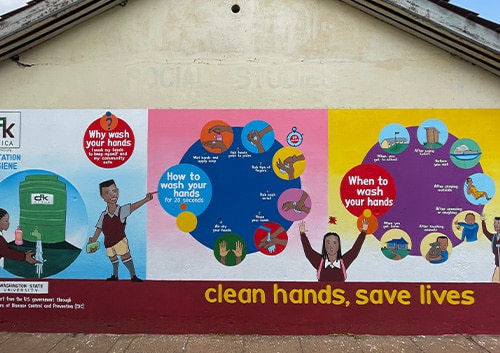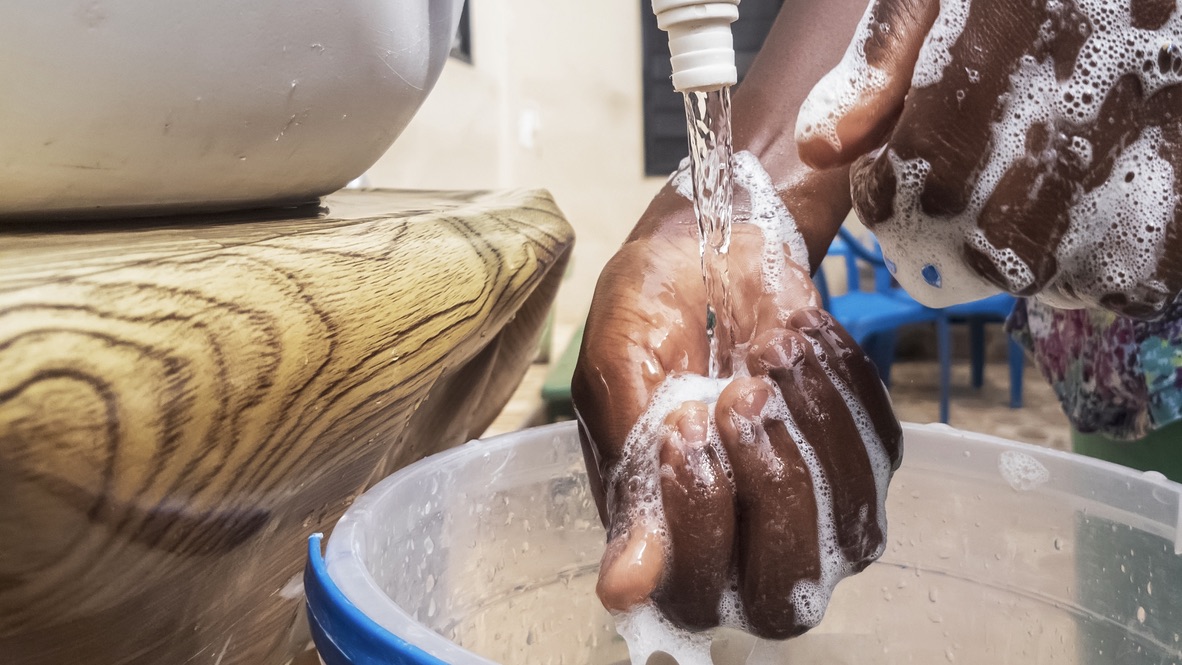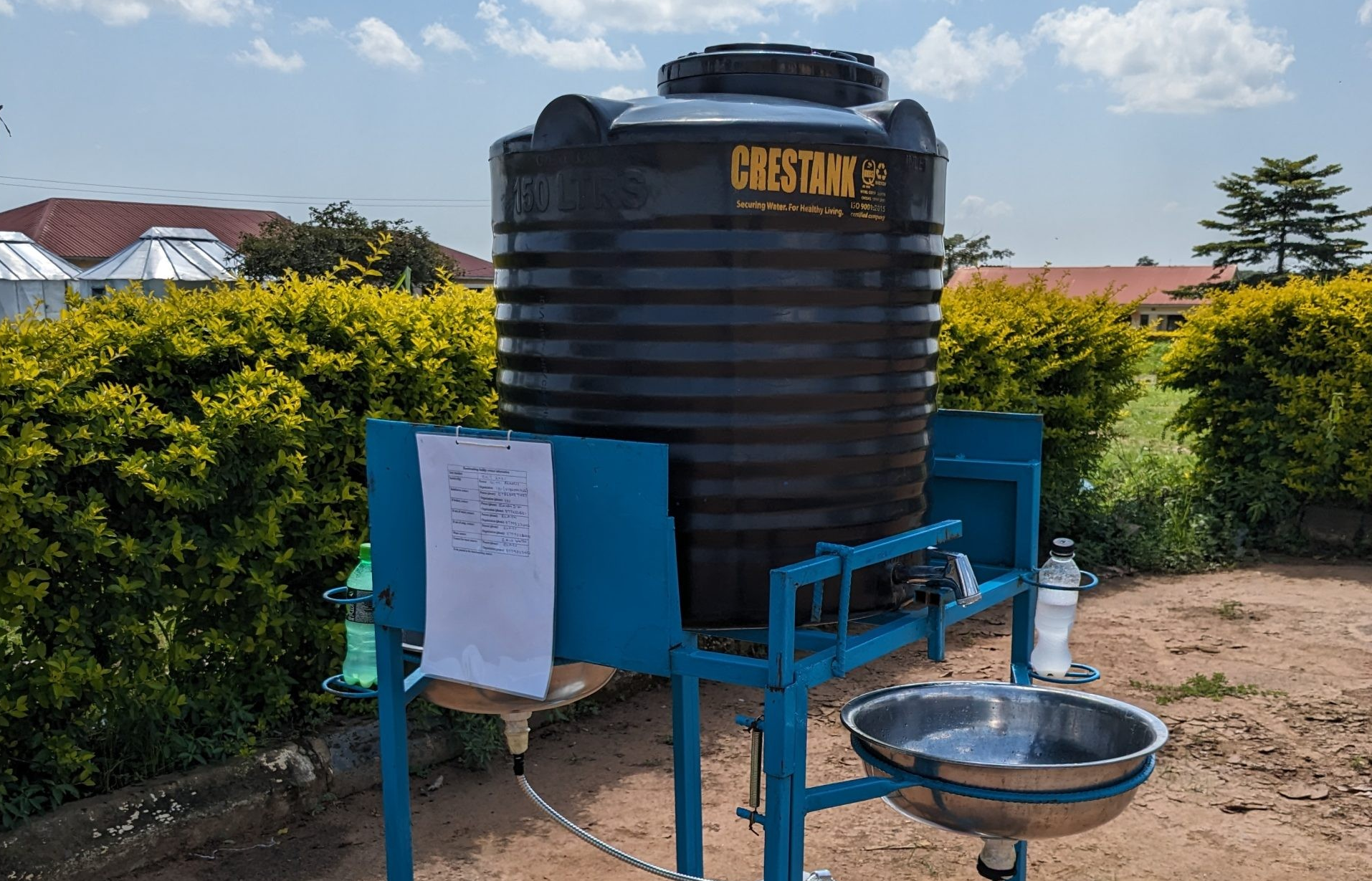At a glance
Improving water, sanitation, and hygiene (WASH) practices like handwashing and environmental cleanliness is crucial to controlling and preventing diseases. During the COVID-19 pandemic, CDC teamed up with partners to enhance WASH activities in healthcare settings, communities, and households in 10 countries.

Global WASH during COVID-19
Increasing access to WASH infrastructure and hygiene practices like handwashing and environmental cleaning is key to reducing the spread of diseases. However, even before the COVID-19 pandemic, access to essential WASH services was limited in some low- and middle-income countries for a large portion of the population.
To reduce the spread of COVID-19, CDC partnered with U.S. research institutions, CDC country offices, organizations, and governments to support WASH activities in the following countries: Belize, Dominican Republic, El Salvador, Guatemala, Haiti, Honduras, Kenya, Uganda, Burkina Faso, and the Democratic Republic of the Congo (DRC). CDC and partners assessed WASH conditions and implemented projects in select healthcare facilities, communities, and households considered at higher risk for COVID-19 transmission.
Activities to reduce illness

CDC and partners focused on improving access to hand hygiene resources, use of hand hygiene services, and environmental cleaning of shared toilets in 114 healthcare facilities in six countries, 59 community institutions including markets, schools, and points of entry in Uganda and DRC, and 405 households in Burkina Faso. These activities included:
- Assessing baseline WASH conditions and hand hygiene practices
- Starting new WASH programs to improve hygiene and reduce COVID-19 transmission
- Monitoring and evaluating the impact of the WASH programs
CDC and partners adapted common WASH tools for the pandemic to assess needs and monitor new programs. To develop new prevention guidance, they used global guidance for reducing the spread of COVID-19 and adapted guidance from settings like schools and healthcare facilities to settings without any existing WASH standards like markets and points of entry.
Findings
Healthcare settings
Although most of the healthcare facilities in this study had an improved water source onsite, hand hygiene resources were often missing at points of care. Frequently, healthcare providers did not follow recommended hand hygiene practices while having contact with patients. Providers were more likely to perform hand hygiene after contact with a patient than before, suggesting that efforts to encourage hand hygiene should emphasize the importance of protecting patients as well as healthcare workers.
Responding to these findings, CDC and partners provided handwashing stations or alcohol-based hand rub (ABHR) at points of care, entrances, exits, and toilets. Healthcare facilities serving refugee populations and internally displaced people received environmental cleaning and hygiene kits and hygiene education for health facility staff and patients. In some locations, partners trained local technicians to produce and distribute ABHR using the World Health Organization's (WHO) Guide to Local Production adapted to district scale.
Community settings

While some community institutions like schools usually had an improved water source onsite, other places like markets and points of entry often didn't. Even when a water source was available, handwashing stations were not always present at critical locations like entrances, exits, and toilets. Staff at these locations reported that previously supplied handwashing stations were no longer working due to poor planning and management. Even where hygiene resources were available, community members often did not follow recommended hand hygiene practices.
To address these gaps in hygiene practices and the availability of resources, CDC and partners focused on improving access to handwashing stations, locally produced ABHR, and hygiene education materials at entrances, exits, latrines, and classrooms. CDC and partners also created standard procedures for management and maintenance to keep these resources working.
Households
Most households in the assessment had an improved water source, but many did not have handwashing stations. Nearly half of households surveyed reported that they did not use soap when washing hands.
As a cost-effective strategy to improve community coverage, CDC and partners initially provided handwashing stations to public locations, hoping that the stations would be shared with nearby households and anyone passing by. However, many stations quickly broke down due to lack of clear responsibility for management and maintenance. Partners then shifted to other efforts: providing hand hygiene kits including handwashing stations, 20-L water storage containers, and bars of soap; constructing public handwashing stations attached to responsible community organizations like schools and community centers; and providing educational messages to households or compounds.
Gaps identified, lessons learned
Need for WASH standards
The study demonstrated a gap in the international WASH guidance for public spaces. Although the United Nations recognizes the availability of WASH services in public places as a human right, and many countries have guidelines overseeing such services, there is no systematic, international guidance for WASH standards in public areas. In some countries and settings, standard procedures for public facilities need to expand with guidance on cleaning and disinfecting and other changes. CDC contributed to efforts by WHO and the United Nations Children's Fund (UNICEF) to develop the first guidance for public spaces.
Importance of managing resources
Management of hand hygiene stations—for example, keeping handwashing stations working and ensuring continuous access to alcohol-based hand rub—is critical to preventing the spread of diseases. It is important to consider the various structural levels needed to improve and maintain hand hygiene resources that promote hygiene behavior. If problems with proper hand hygiene technology and access are not resolved, awareness of hand hygiene among the community can become insufficient. New evaluations of these areas can help ensure that WASH resources to prevent disease are accessible and practical for everyone. There is also need for greater water supply for handwashing and improved management of public sanitation facilities.
Following hygiene recommendations key
Access to hand hygiene resources is necessary to prevent disease, but it is not enough if recommended hygiene practices are not followed at key times. Across countries and settings, CDC and partners identified inadequate hand hygiene access, low hygiene practice like the use of hand sanitizer or handwashing after using the toilet, and a need to make it easier for people and communities to follow recommendations for reducing the spread of COVID-19.
Alcohol-based hand rubs effective
In healthcare facilities, alcohol-based hand rubs have proven to be an effective complement to handwashing stations. In community settings, ABHRs are recommended when handwashing with soap and water are not practically available. In the right circumstances and settings, local production of ABHR may be a low-cost and effective complement to handwashing stations in community settings as well.
However, it is important to examine how supply chains can deliver locally produced ABHR consistently to community settings that, unlike healthcare facilities, do not have clear supply systems in place. For example, locally produced hand rub in Uganda used to respond to Ebola outbreaks follows healthcare-facility supply chains. Markets and schools are often excluded from distribution efforts.
To ensure sustainable access to alcohol-based hand rubs, it is important to determine whether existing local production for healthcare facilities can also supply communities or if community-based production and distribution strategies would be more effective.
Continued collaboration
CDC has ongoing collaborations with partners to improve access to WASH services and infrastructure around the world. For more information on CDC's efforts to improve access to WASH and other global WASH information, visit CDC's Global Water, Sanitation, and Hygiene site.
To read more about these WASH activities, visit PLOS Water.
